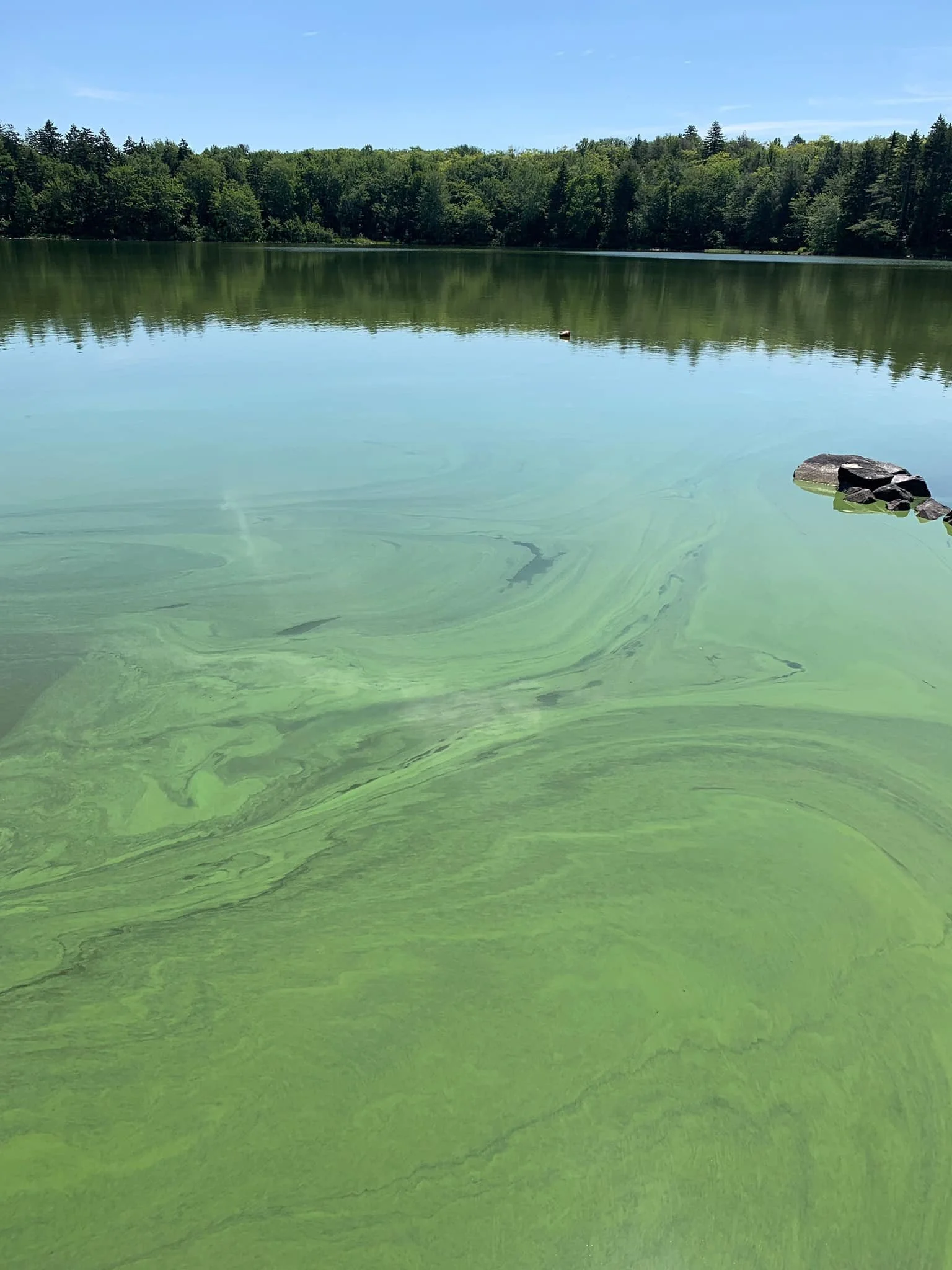Blue-Green Algae (Cyanobacteria)
Blue-green algae can appear in lakes, ponds, rivers, and streams—typically from May to October. It occurs naturally, but under certain conditions, it can multiply quickly and form harmful blooms. These blooms may be toxic to humans and pets.
If you see water that looks discoloured or has surface scum (in shades of blue-green, green, brown, red, or white), avoid contact, don’t swim, and keep pets away.
To learn more about what to watch for and how to report a suspected bloom, visit Nova Scotia’s Blue-Green Algae Information Page.
For local updates, check:
Monitoring and Advisories
The Halifax Regional Municipality (HRM) tests water quality only at supervised beaches from July 1 to August 31 each year. Outside of those locations and dates, reports of blue-green algae are based on visual inspections only.
When a potential bloom is observed and reported to HRM —such as at the beach near the dog park— they report it to Nova Scotia Environment and Climate Change, the department responsible for surface water monitoring in the province. No follow-up testing is currently conducted by HRM or the province.
Public advisories are posted to help people assess the risk for themselves based on visible conditions and known reports. These advisories typically stay in place through the warm-weather season.
If blue-green algae is present:
don’t drink, swim, bathe, shower or brush your teeth with the water
don’t allow children, pets or livestock to drink or swim in the water
if you come in contact with blue-green algae, wash yourself and any items that came in contact
use alternative water sources for drinking, cooking, bathing, laundry and watering vegetables (contaminated water isn’t safe even if it’s boiled, filtered in a jug or pitcher or treated with bleach, herbicides, copper sulfate or other algicides)
be careful with recreational water activities that generate spray (like boating) because the toxins can be inhaled
be careful when eating fish caught in water where blue-green algae blooms occur (do not eat the liver, kidneys or other organs because the toxins can be stored there)
if you get sick, seek medical attention
if your pet ingests blue-green algae, contact a veterinarian immediately

